Подход к пониманию устойчивого туризма через линейную регрессию
Aннотация
Статья начинается с вопроса, как можно измерить устойчивый туризм, если он является очень сложным, многогранным, многопрофильным и междисциплинарным термином? Помимо того, что туризм не является наукой и не имеет объекта исследования, распространённая проблема исследователей состоит в том, чтобы распределить и разграничить феномен туризма по количественным параметрам, главным образом из-за отсутствия данных и собственных моделей измерения туризма. По этим причинам целью исследования является количественная аппроксимация объяснения понимания элементов устойчивого туризма с помощью линейной регрессии. Исследование основано на количественном, математико-статистическомй, неэкспериментальном и документально-библиографическом подходах. Полученный результат представляет собой модель, отражённую в линейной регрессии, которая пытается собрать все аспекты устойчивого туризма в единую формулу:
 , где появляется другая формула, в которой добавляются другие переменные, не учтённые в первой: TS = R ⊂ ∑ Fn + Modelsn + Systemsn + Constructsn + Indicatorsn + un, а также устанавливает ошибку, которую можно обозначить при измерении устойчивого туризма
, где появляется другая формула, в которой добавляются другие переменные, не учтённые в первой: TS = R ⊂ ∑ Fn + Modelsn + Systemsn + Constructsn + Indicatorsn + un, а также устанавливает ошибку, которую можно обозначить при измерении устойчивого туризма 
К сожалению, текст статьи доступен только на Английском
Introduction. Tourism lacks critical research (Castillo & Panosso, 2011) not being considered a science, therefore it is in constant search of its theoretical body (Ascanio, 2010) and object of study, having to delimit the tourism research to the tourist, or to the tourist spending, or to the impacts of the tourist activity or to receiving and issuing communities of tourism, in order to encourage the socio-economic development of the territories, national wealth , business and infrastructure creation (Brazales et al., 2018).
By virtue of the problem, the need arises to try to understand the tourist phenomenon, for which it is necessary to have a construction of knowledge with empirical data, philosophical reflections and epistemological arguments. (Bustamante et al., 2015) or also, see it from various approaches like this, as pointed out (Ascanio, 2010) in his academic reflection that tourism can be studied from the behavioral, phenomenological, economistic and systematic approach, or in turn as proposed (Panosso, 2007) an understanding of the philosophy of tourism from a more humanistic perspective encompassing three theoretical eras of tourism: pre-paradigmatic (theoretical analysis of tourism), paradigmatic (general theory of systems) and new approaches (they understand putting the human being as the center of tourism and innovate or improve systems theory).
It is therefore that, in accordance with (Ascanio, 2010)Tourism needs a theoretical body, methods and scientific bases to be able to categorize it as science and above all to be able to understand it and that a deeper and epistemological review will give the reason for being of tourism. In addition, the same author defines the appearance of tourism studies from before Thomas Cook and at the same time defines Hunziker and Krapf from 1942 as the parents of tourism.
It is clear that tourism activities “have generated profoundly transformative dynamics in tourism-receiving societies for more than fifty years, manifested in high growth rates, deep territorial and infrastructure transformation, new ways of life, growth in income from the population and high job creation " (Moratal, 2018, p. 59)turning it directly into an important capitalist industry that is expanding very rapidly every day (Büscher & Fletcher, 2017).
Therefore "tourism, like any other economic activity, makes its way as a generator and accumulator of wealth, an agent for the appropriation of nature and a condition for the standardization of the market, functionalization and homogenization of the environment" (Palafox, 2016: 22).
In this perspective, the dynamics of studying tourism from an economic and epistemological perspective stimulates the production of national goods and services, “in response to the growing demands of external visitors. This in turn entails multiplying effects on domestic growth through productive chains of purchase and sale of intermediate inputs, required in the production processes of tourist merchandise "(de Morales, 2008: 6).
But up to this point, and with all these affirmations of the impact of tourism, it is worth asking the following: how can tourism be measured if it is a very complex, transversal, interdisciplinary and multidisciplinary term? Is sustainable tourism an already defined concept? Can you build constructs and define sustainable tourism? What types of methods are used to measure sustainable tourism? and above all the questions arise what to measure in tourism? and for what to measure?, which agrees that “measuring tourism means questioning its very nature”(Boyer, 1964: 97).
In congruence with the proposed questions, there is a frequent problem of tourism managers and researchers, who try to pigeonhole and delimit the tourism phenomenon within quantitative parameters that are easy to extract and measure.(Aires & Varum, 2018; Boyer, 1964; Fernández, 2001; Gómez Nieves & Rodríguez Bocanegra, 2018; Hernández Nanclares et al., 2002; Leguizamón, 2018; Ortega et al., 2018; Sanz & Insúa, 2003), but as well as, in research by (Brazales Herrera et al., 2019) denotes the lack of real, truthful data and information of the tourism sector to be able to achieve the measurement objective, despite the information must be publicly known, that is, “official statistics are a public good and as such should be available to citizens to assess the evolution of the economy and society” (Leguizamón, 2018: 13). It is therefore that the objective of the research.
Despite the fact that there are satellite accounts (Antolini & Grassini, 2020; Organisation for Economic Co-operation and Development, 2008), tourist barometers(Bond & Mcdonald, 1978; Dmitrović et al., 2009), tourist observatories (Brazales et al., 2018; Elouali et al., 2020; Espinosa et al., 2020; D. Liu & Dewancker, 2017), and other reference statistical documents of the (World Tourism Organization, 2021), only allow to have macro and general data of the tourist activity through international tourist arrivals.
The importance of being able to measure tourism emphasizes its positive and negative effects that activity in the localities entails, as such, that tourism development is achieved with the availability of activity measurements through sectoral statistics, but that, despite efforts to control the tourist phenomenon, degrading factors have been evidenced in the territories (Y. Liu et al., 2020; Moreno-Gené et al., 2020; Q. Zhang et al., 2020) due to the effects of early and poorly planned tourism (Aledo et al., 2007; Maldonado et al., 2006; Marins, 2015; Santos, 2004).
We live in a limited world with unlimited needs and tourists are effectively those subjects of the activity with great requirements, expectations and acquisition of unique experiences in the territories, which go hand in hand with the visitor's spending capacity, which is helpful to the law of market supply, defining that the higher the price increases the quantity supplied increases(Wainer, 2009), therefore it is defined in an uncontrolled expansion of the tourist offer(Armendáriz et al., 2014; Ivars-Baidal, 2001; A. G. Morales, 2006), which in the words of (Ruda, 2016) a destination with a damaged environment loses its attractiveness and this causes an increase in the construction of new tourist destinations, and resulting in deterioration of the ecosystem, tourism-phobia, economic crises, the same factors that are demarcated from the lack of quantifiable data for the decision making (Ait-Yahia Ghidouche & Ghidouche, 2019; Barrado-Timón & Hidalgo-Giralt, 2019; Johnson & Sieber, 2011).
Joining the problem, tourism researchers have also found qualitative ways to approach the measurement of tourism with cartographic analysis methods to study the evolution of the recreational tourism system. (Koroleva & Brazales, 2020), or content analysis with a rhetorical nature and that sustainable tourism represents a union of indirect indicators of the impacts of tourism activity (Brauer & Dymitrow, 2021).
As a complement to these methods, there is the MICMAC analysis or Multiplication Cross Impact Matrix Applied to a Classification, It was developed in 1971 by Michel Godet and applied to the key development factors of nuclear energy in 1974 with JC Duperrin. It was originated to ask good questions and identify key variables despite the fact that authors such as (Baena, 2015; X. A. A. Morales, s. f.; Says, 2014; Uribe & Vargas, 2016; Vásquez et al., 2005; Arango Morales & Cuevas Pérez, 2014) define that it was created in 2000 by Godet.
The MICMAC has been used in articles applied to network maps in tourism and narrative interviews to address the variables in significant maps within its network, inspired by concepts from formal network analysis and meeting qualitative standards (Herz et al., 2015) and that they connect in the form of nodes (Lendaris, 1980) or in turn in determining the conceptualization of tourism and making clarifications that affect specific situations by linking the results provided by experts and relating their hierarchy of impact between the same variables, (Arango Morales & Cuevas Pérez, 2014), even said author renames it as a mixed method, on the other hand, its application is emphasized in defining variables that base a process of intervention in organizations, determining fundamental factors in undertakings. (Uribe & Vargas, 2016; Hernández, 2011) and analysis of future multiple and prospective scenarios for projects (Alexandra V. Cely B, 1999) (Leon Ganatios & Díaz Jiménez, 2018; Dema & Barberá, 2010) in the field of tourism in order to determine factors of competitiveness of the destination (Machado et al., 2014).
Another qualitative method that is used in measuring tourism is the documentary analysis that several authors have been studying over time, with the aim of emphasizing its degree of importance, dimensions; María Pinto Molina, 1989; Alonso, 1986; Díaz & Vega-Valdés, 2003; Pinto Molina & Amat, 1991) concept and structure (Pérez & Rodríguez, 1994) or its need for use in all sciences as an integrative process (Dulzaides Iglesias & Molina Gómez, 2004) and that is supported by technology (Borja & Perez, 2019).
Thus, when used in various areas of knowledge, especially in the area of tourism in historical analysis, tourism quality, creation of destinations, conceptualization of tourism, evolution of tourism and promotion (Amboage, 2015; Caiza & Molina, 2012; Canul & Santander, 2014; Flores et al., 2017; Fuentes-Doria et al., 2019; Medina et al., 2019; Mikery Gutiérrez et al., 2014), resulting in new current documents of tourism theory and its measurement.
Thus, in the search for the literature, authors found with studies and models to measure sustainable tourism using quantitative methods such as: accounting and analytical (Hernández et al., 2019; Masih et al., 2018; Morillo, 2009; Peral et al., 2010; Tuero & Arturo, 2017) that are easily adapted to a global measure and tourist destinations, as well as methods based on the tourist's stay in lodgings, counting at the borders or probabilistic survey (Boyer, 1964); or through the measurement of innovation in tourism with input variables (determinants, driving forces, sources of knowledge and policies) and output (measures, effects, implications and impacts) (Jacob et al., 2003; Mohd Bukhari & Faiz Hilmi, 2012). Approaches with factor analysis methods have also been implemented (Brida et al., 2012; Fernández, 2001; Manjón & López, 2008; A. F. Morales & Toledano, 2018; Vivek, 2021) where the relationship of variables directly implicit in tourism predominates.
On the other hand, a quantitative method such as least squares, which is attributed to Adrien Marie Legendre (1752-1833) (Denis, 2000) who gave an exact method to regression to get more exact values. Nevertheless,(Denis, 2000) quoting (Stigler, 1986), discusses the origin of least squares, alluding to the fact that they were discovered in 1805 by Legendre (Legendre, 1806) and by Gauss in 1809 (Gauss, 1809), but that Sir Galton shaped them and coined the term in 1885 is also widely used to measure tourism.
The literature review affirms that the use of this method in the social sciences is useful in the relationship of the variables (Leyva Cordero & Olague de la Cruz, 2014; Vega, 2004), focusing work on areas of tourism research, with the objectives of determining a relationship between economic growth, environmental degradation, tourism development in the territories and at the same time causes of the different trends of tourist flows and the relationship of tourism development with the quality of the tourist offer and labor skills of its workers (Adedoyin & Bekun, 2020; Alpler & Arasli, 2020; Balsalobre-Lorente & Leitão, 2020; Di-Clemente et al., 2020; Feshari & Hosseinzadeh, 2018; Galeazzo et al., 2021; Isa et al., 2018; Khan & Hou, 2021a, 2021b; Khoi et al., 2020; Kucukergin & Gürlek, 2020; Leitão & Lorente, 2020; Moreo et al., 2020a, 2020b; Pérez-Rodríguez et al., 2021; Rasoolimanesh et al., 2021; Sokhanvar et al., 2018; Susanto et al., 2020; Xie et al., 2021; Xu et al., 2020), which reflects the popularity and effectiveness of the method.
In relation to the topic and the problem, the linear regression method appears within a series of quantitative methods as one of the most popular in most areas of scientific knowledge due to its applicability and easy understanding when forecasting and making deductions.
Therefore, Sir Francis Galton is the founder of linear regression and correlation statistical techniques in an anthropometric study. (Castro & Serrano, 2012; Goldstein, 2012; Leal-Cornejo et al., 2019; Pearson, 2011; Senn, 2011; Stanton, 2001) in his book "Natural inheritance" in 1889, although the correlation of regression was more prominent in the works of Karl Pearson (Denis, 2000) (Stanton, 2001).
The linear regression model is very generic, for reasons of its use in almost all fields of science as determined by the search for successful cases of its application such as: economic studies, local development, crisis, income, production (González, 2017; Herrera, 2008; Instituto Tecnológico Metropolitano et al., 2015; Madariaga et al., 2013; Nieto, 2009; Quintero & Coello, 2006; Ramajo & Hernández, 1994; Rodriguez, 2009; Villascuerna et al., 2004). At the same time, in the business, advertising and quality fields (Arellano Cepeda et al., 2017; Casielles et al., 2000; Falquez Arce et al., 2017; López & Ruiz, 2011; Quispe Fernández et al., 2016). In the agricultura (Carrasquilla-Batista et al., 2016; Guerra Bustillo et al., 2014), engineering (Campos-Aranda, 2011; García-Rodríguez et al., 2017; J. M. A. Gómez, 2014; R. S. Gómez & Martínez, 2017; Minnaard, 2011) and in the medical and epidemic fields (Bleda Hernández & Tobías Garcés, 2002; Coelho-Barros et al., 2008).
This analysis emphasizes the popularity of the method and its use in all sciences and especially it is used in the branch of tourism to determine causes of economic, social, and ecological development in localities and to understand and control the tourism phenomenon (Aliyeva et al., 2019; Awad & El-Sayed, 2021; Buallay et al., 2021; Forés, 2019; Halid & Abdul, 2018; Ignatenko et al., 2020; Kruger & Viljoen, 2021; S. C. López, 2020; Prapasawasdi et al., 2018; Revida et al., 2018; Sánchez-Valdés et al., 2021; Toanoglou et al., 2021; Wang & Chen, 2021; Yao et al., 2021; Zhang et al., 2018) or in turn determine factors that affect tourism sustainability such as customer service or gastronomy (Babolian Hendijani, 2020) and even for the determination of positive impacts on residents of tourism in their areas, and that the perceived economic and environmental impacts of tourism significantly influence the general satisfaction of residents with tourism (Ngowi & Jani, 2018).
Furthermore, the advantages of using the method are very clear, such as that it approximates the relationship between a dependent variable and independent variables “n” times; determines a causal relationship between the dependent variable and the independent variable, in addition to determining the incidence of variations or changes in the independent variables on the dependent variable. But, on the other hand, the method can also have disadvantages and that, linear regression only models the relationships between dependent and independent variables that are linear. It is assumed that there is a linear relationship between them which is sometimes incorrect and is very sensitive to anomalies in the data (or outliers). Now with regard to sustainable tourism studies are related to el displacement of tourists from their place of origin to other destinations, the same displacement that is influenced by the motivation of the trip and the morbidity that the destination generates, that is, by the leisure and recreation activities that can be carried out and in addition to enjoying and learn about new cultural and natural attractions and their impacts on the territory.
Therefore, tourism planning is rooted in promoting the different tourist destinations and their resources, but at the same time to recover, remodel, rebuild or in turn also create tourist attractions that provoke and attract visitors to form a tourism demand for the destination. The wealth of a people is measured according to its culture and traditions, but in postmodernism it breaks the paradigm of the single culture and globalizes it. This means that, since the beginning of the 21st century, a process of tourist deconcentration and differentiation has been observed that has allowed the emergence of various tourist destinations, this in response to the motivations of a demand interested in discovering new travel options that satisfy their personal needings.
All this led to an understanding of being able to industrialize tourism but also ensuring environmental sustainability and improving the quality of the environment in which people live. (Brazales & Koroleva, 2019). Despite the fact that "it is also worth highlighting the theoretical and practical difficulties when it is necessary to value environmental goods and flows and human and social capital, due to the lack of adequate statistical data for their estimation" ( Hernández et al., 2019: 908).
From the aforementioned statements, it is argued that sustainable tourism is a complex notion, since, at the same time, it represents a sector of the state economy and that, at the same time, it is a mode of leisure and use of free time with the objective of the search for new experiences, both in urban / rural areas, in addition the same authors confer a very relevant statement when pronouncing in their speech that alternative tourism is implicit in sustainable tourism (Brazales et al., 2020) and that forms a part of its measurable constructs.
In accordance with the theories that support sustainable tourism, the General Systems Theory converges (Andriani & Parise, 2017; Cecan & Marian, 2015; Hemavathy & Soundararajan, 2016), which allowed sustainable tourism to be specified as an interconnected set of elements that are added to tourism supply and demand, thus defining itself as "one that fully takes into account the current and future economic, social and environmental repercussions to satisfy the needs of visitors, industry, environment and host communities" ( Hernández et al., 2019). In other words, sustainable tourism commits to a tourism planning rooted in the public and economic policy of the countries, where efforts to combat the deterioration of the environment, acculturation, labor exploitation and the flight of active labor from the region are focused in the locality helping with the economic interests of both tourism companies and recipient towns.
Likewise, the measurement of sustainable tourism allows a better use of resources and participation of residents (Vivek, 2021), in addition to a balance between heritage and mass tourism with the life of the locals (Valls & Roca, 2021), and ultimately the general progress of the economy in the long term (León-Gómez et al., 2021), thus becoming the term sustainable tourism in the mainstream of tourism studies (Brauer & Dymitrow, 2021) and even a world-class badge (Bilbao-Terol & Bilbao-Terol, 2020).
It is evident that the method is widely used, but it is extrapolated from different areas of knowledge to tourism and there is no model clearly for tourism. In this virtue the objective of the research is framed – to approximate an explanation of the elements of sustainable tourism quantitatively through a linear regression.
Materials and methods – have a quantitative, mathematical-statistical, non-experimental and documentary bibliographic approach.
Results and Discussion. Starting from the analysis of tourism from a systemic perspective (figure 1), the construction of the tourism understanding is evidenced through several elements, with the objective of establishing what is the sustainable development of tourism and the following systematic model was obtained.
Figure 2 compromises the intrinsic relationship of the components that sustainable tourism contains, having to emphasize that it is made up of alternative tourism and the sum of more models, systems, theoretical constructs and distinctive tourist quality based on ecological impact factors, sociocultural, political and economic.
Therefore, the relationship between the variables alternative tourism (TA) and sustainable tourism (TS) can be shown mathematically in formula 1.
R = TA ϵ TS (Formula 1)
In congruence with what is framed, tourism sustainability seen from the economic-mercantile side, can be formed in the same way from several theoretical constructs that approximate its understanding, as detailed in figure 3.
Figure 3 commits alternative tourism as the sum of interactions of a tourism market, which starts from the supply and demand of goods and products and services, which together with tourist spending generate impacts and the economic resources necessary for the conformation of quality tourism products, that is, investment in the tourism sector that, in the end, will lead to a redistribution of wealth in the locality, raising its standard of living.
Now, with the understanding of sustainable tourism, and excavation between its elements, variables, dimensions and theoretical constructs and applying the regression analysis (formula 2) it was possible to propose an equation (formula 3) that shows how all the dependent variables are related to the independent.
The linear regression formula is as follows:

From formula 1, “y” was replaced by “F” which means the function of the equation, that is, it is the dependent variable that is the result of the interaction between the variables included in sustainable tourism. In addition, the model without intercept is considered according to the elements of figure 2, where X1 was replaced by the construct of environmental factors with the letter "A", X2 with the construct of sociocultural factors with the letters "SC", X3 by the construct of political factors with the letter "P" and X4 by the construct of factors economic with the letter "E", resulting in formula 3:

 (Formula 3)
(Formula 3)
Then, by shaping the relationship between the economic, socio-cultural, political, economic constructs and the various constructs, an understanding was obtained embodied in formula 4, where it is estimated that sustainable tourism is equal to the relationship that is included by the summation of the functions (constructs), plus the models, systems, other constructs, indicators and other variables that were not considered in formula 3, denoted by a:
TS = R ⊂ ∑ Fn + Modelsn + Systemsn + Constructsn + Indicatorsn + un (Formula 4)
From this it is concluded that ∃ TA ϵ TS that can be approximated by the regression equation in the various constructs.
It should be noted that, like any regression, the measurement presents a margin of error, the same as that expressed in formula 5.
E = F - TS (Formula 5);
Where, E is the error, F is the function (formula 3) and TS is sustainable tourism.
This error can be measured relatively and starting from formula 5 a new expression (formula 6) is obtained as follows.

Where, Er is the relative error.
The proposed regression model will be, the more robust the more elements are considered within each construct of the elements of the independent variables. In relation to future work, the task remains to generate the appropriate constructs to estimate the proposed regression equation.
Conclusions. The usefulness of the regression method is that it allows to measure the effect of each construct on the variable that describes sustainable tourism, and it is more efficient if it is extrapolated to a generic formula applicable to the tourist area. In this sense, the adjustment and construction of the constructs necessary to present a calibration exercise that allow the proposed regression to be concretely estimated will remain as a future line of work. Likewise, it should be noted that its application is easy to understand and comprehend, and models, systems, indicators and other constructs can also be added to the formula that the researcher considers pertinent, which contributes significantly to the improvement of tourism management. of the territories in a sustainable way.



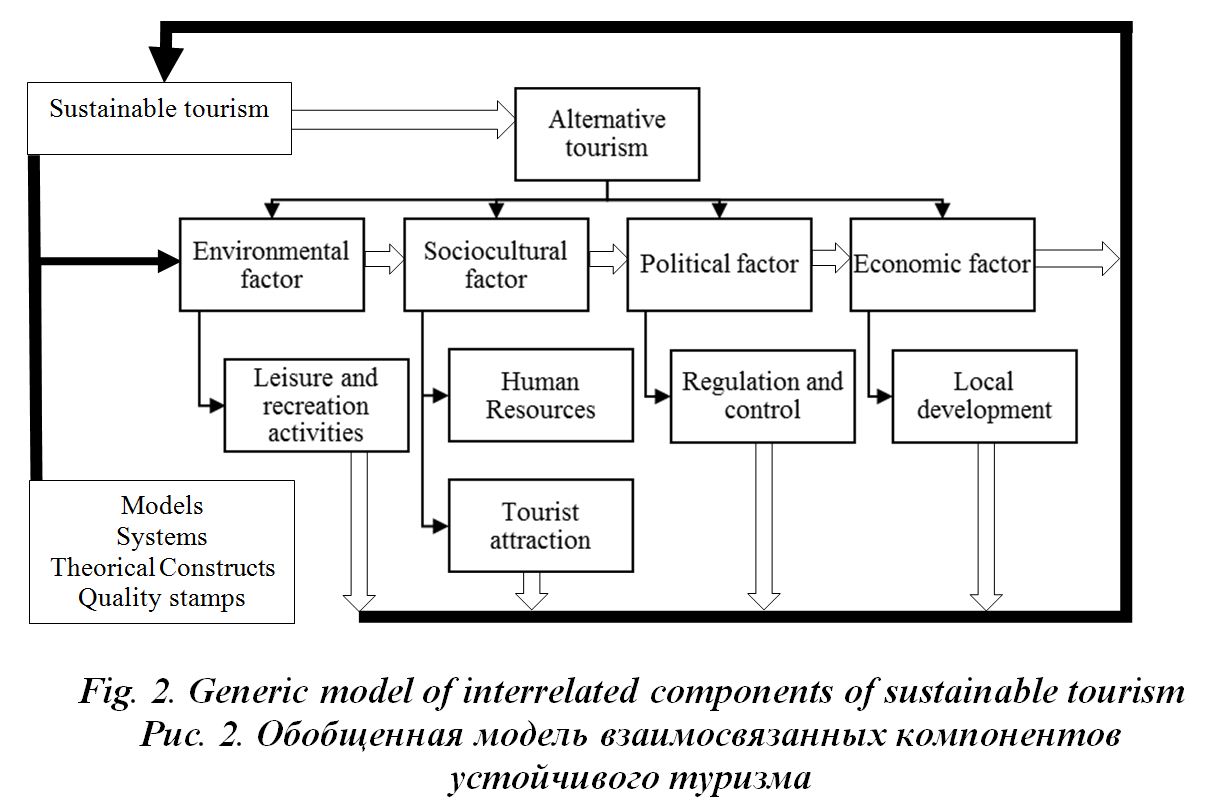
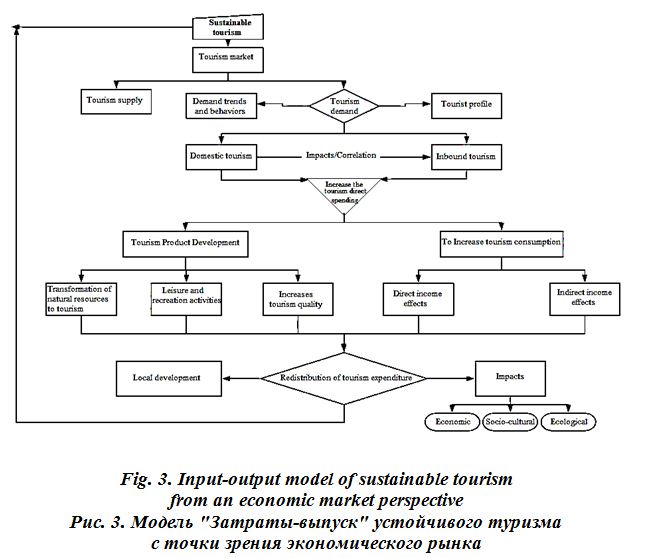

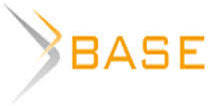



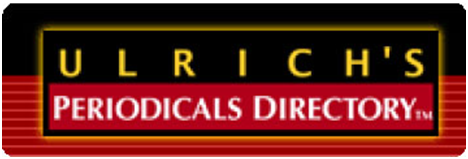





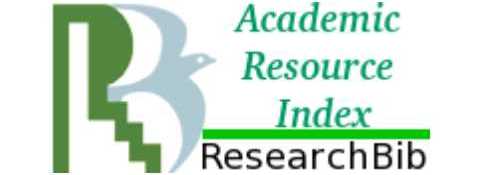

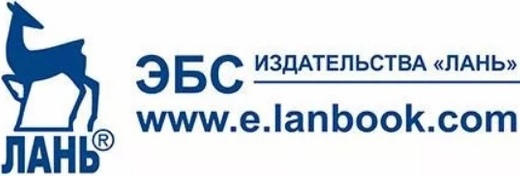

Список литературы
Список использованной литературы появится позже.